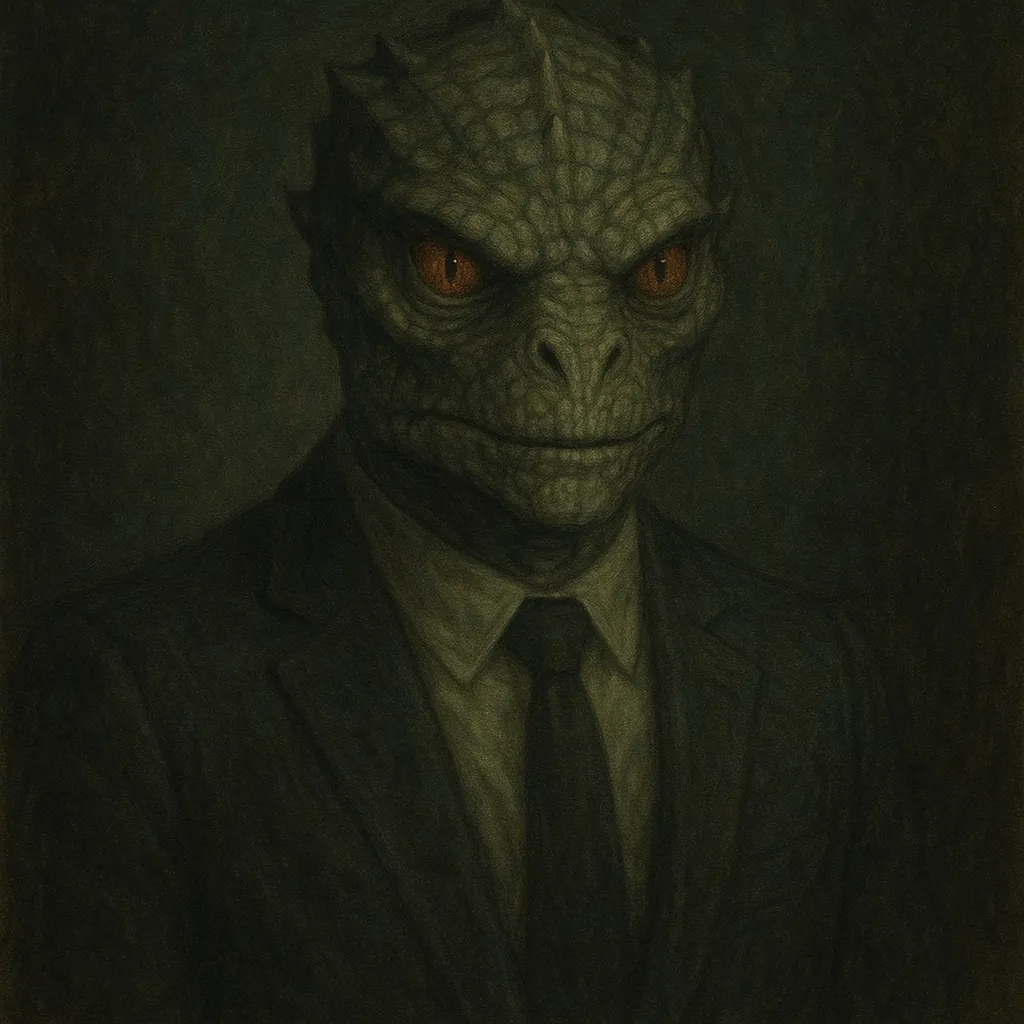Reptilian Aliens: The Shape-Shifting Overlords of Conspiracy Lore

They walk among us — or so some believe. Hidden in plain sight, masked by human appearance, they influence our world from behind the scenes. These are the Reptilian aliens: cold-blooded, cunning, and, according to some, in positions of immense power. Politicians. Royalty. Celebrities. All supposedly under the sway — or actually are — members of an ancient, otherworldly race.
It might sound like the plot of a sci-fi movie, but for many, the Reptilian conspiracy is a serious belief. Where did this bizarre theory come from? Why has it endured for decades? And could there be anything to it beyond wild imagination?
Let’s peel back the scales and look a little closer.
👁️ The Origins of the Reptilian Theory
The modern idea of Reptilian aliens can be traced most famously to David Icke, a former British sports presenter turned conspiracy researcher. In the 1990s, Icke began speaking publicly about an extraterrestrial species of shape-shifting reptilian beings, known as the Anunnaki, who had infiltrated human civilization thousands of years ago and continue to control humanity through manipulation and fear.
According to Icke, these creatures originate from the Alpha Draconis star system and have the ability to shift between their true reptilian form and a human appearance. Their goal? Global domination through deceit, distraction, and power consolidation. He claimed that many world leaders — from the British royal family to American presidents — are either possessed by or are themselves Reptilians in disguise.
Of course, ideas about serpent-like beings predate Icke by centuries. Ancient cultures around the world have mythologies involving serpent gods or reptilian entities — from the feathered serpent Quetzalcoatl of the Aztecs to the Nagas of Hindu and Buddhist traditions. Could these myths be echoes of something older, something more literal?
🧬 Behind the Mask: The Shape-Shifter Narrative
One of the most captivating (and creepy) elements of Reptilian lore is their alleged ability to shape-shift. Witnesses have claimed to see a flicker of scaly skin or vertical pupils in the eyes of otherwise normal people. Some say these glimpses occur during moments of stress or when the creature is caught off guard. Others claim photographic or video “evidence” shows anomalies that hint at a reptilian form hidden just beneath the surface.
In online forums and YouTube rabbit holes, videos are dissected frame-by-frame, looking for signs: a moment where someone’s tongue flickers oddly, or their eyes flash in a way that seems… not quite human. While most of these can be explained by video glitches or pareidolia — the tendency to see meaningful patterns where none exist — believers argue they’re seeing past the illusion.
But even skeptics have to admit: there’s something deeply unsettling about the idea of someone not being who — or what — they appear to be.
🛸 The Alien Agenda
So why are they here?
Those who buy into the Reptilian theory believe the agenda is all about control. Through manipulation of global institutions — governments, banking systems, media conglomerates — Reptilians aim to keep humanity divided, distracted, and dependent. Some suggest they feed off human fear or energy, using our emotional turmoil as a form of sustenance. Others say they’re conducting a long-term experiment, shaping human evolution for reasons we can’t begin to grasp.
There are even tales of underground bases, like the supposed Dulce Base in New Mexico, where Reptilians are said to collaborate with shadowy government factions. Here, they supposedly conduct genetic experiments, including human-reptile hybrids and advanced cloning — stories that wouldn’t be out of place in a sci-fi thriller.
Of course, there’s no verified evidence for any of this. But in the world of conspiracy lore, the absence of proof often fuels belief rather than weakens it.
🧠 The Psychology of Belief
Why do people believe in Reptilian overlords?
Part of the appeal lies in the power of myth. Reptilian aliens offer a compelling narrative — one that explains the unexplainable and puts a face (or a snout) to the sense that something isn’t quite right in the world. When the world feels chaotic or unjust, it’s oddly comforting to imagine there’s a reason — even a sinister, intergalactic one.
Psychologists point to a number of cognitive biases that make such beliefs more attractive. Humans are pattern-seeking creatures. We like stories with heroes and villains, order and chaos. When conspiracy theories offer a narrative where hidden forces pull the strings, it can feel more satisfying than the messiness of real-world geopolitics or economics.
That said, many Reptilian believers aren’t wide-eyed zealots. They’re intelligent, skeptical thinkers who’ve simply drawn different conclusions — often based on the same desire most of us have: to understand the truth behind the curtain.
🔍 Fact, Fiction, or Something in Between?
There’s no scientific evidence that Reptilian aliens exist. No biological samples. No government disclosures. No credible eyewitness accounts that stand up under scrutiny. And most of the “proof” available is anecdotal, easily debunked, or reliant on highly subjective interpretation.
But that hasn’t stopped the idea from flourishing — especially in the internet age.
From fiction and film (think They Live, V, or Doctor Who) to internet memes and late-night AM radio, Reptilian aliens have become a staple of fringe culture. They symbolize our deep mistrust of authority, our fear of the unknown, and our unease about the forces that shape our lives.
And maybe that’s the point. Whether real or imagined, Reptilians reflect something very human — the suspicion that those in charge are not quite like us.
🧊 The Cold-Blooded Conclusion
Are Reptilian aliens lurking behind the masks of our leaders? Or are they simply modern-day boogeymen — exaggerated symbols of the power structures we can’t quite explain?
Either way, the legend continues. It slithers through conspiracy forums, crops up in documentaries, and stares back at us from pixelated videos. Whether you believe in shape-shifting lizard people or not, the fascination they inspire is undeniable.
Because sometimes, the scariest monsters aren’t the ones hiding in the shadows — they’re the ones sitting calmly in the spotlight, smiling for the cameras.
